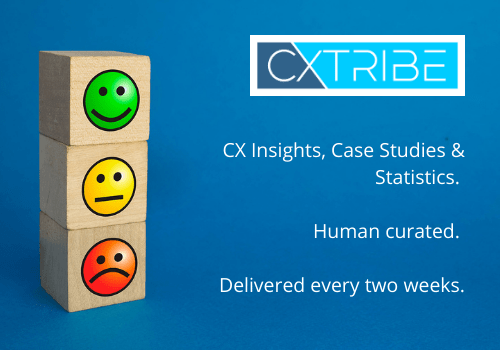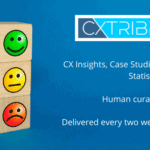CX Tribe is the best Customer Experience insights, case studies and statistics. Human curated. Delivered weekly. Join more than 5,000 other CX Professionals and subscribe.
Some of you may be wondering why the normally fortnightly (two weekly for those not in Australia) CX Tribe publication cycle has been pushed to more than a month.
The reason is content. More precisely, the lack of good quality, new ideas, that add to the discussion on CX.
Basically, I didn’t have anything great to share so I kept quiet.
I’m always interested in great content so if you have some – reply and let me know so I can share it with the CX Tribe audience.
[On-Line Reviews]
On-line Reviews Actually Change People’s Brand Loyalty
This study looked at the connection between on-line reviews and various brand aspects including awareness and perceived quality.
While a lot of the results were expected, e.g. positive word of mouth generates positive perceived quality, one was very unexpected: negative word of mouth reduces brand loyalty.
We expect that a person’s brand loyalty will be impacted by their experience with a brand. But this study indicates that it can also be impacted by someone else’s experience (the reviewer).
I am assuming there is some sort of emotional response: if other people think this brand is no good (even if my experience was good) then maybe I shouldn’t buy from them anymore.
This clearly has implications for proactively managing public customer reviews and internal reviews, aka survey feedback, quickly and effectively.
[Survey Analysis]
Be Careful Interpreting What Customers Tell You
Global consulting firm Bain recently put out an interesting study on banking and banking attrition rates.
Surveying about 56,000 consumers in 11 countries, it’s comprehensive in its data collection but shows that care must be taken when interpreting what is heard from customers.
In the “Why customers defect” section we hear that “29% of those who defected received a direct offer from a competing bank” and most (53%) defect due to a more affordable product.
While price is cited very often, in my experience, when you perform more rigorous survey processes that force customers to trade off drivers, using for instance Best-Worst Scaling, price falls from being most important to third, forth or even lower in importance.
I’m sure that 29% did defect after receiving an offer but many were already likely primed to be looking for an alternative supplier due other factors.
Please listen to your customers but be careful interpreting what you hear.

